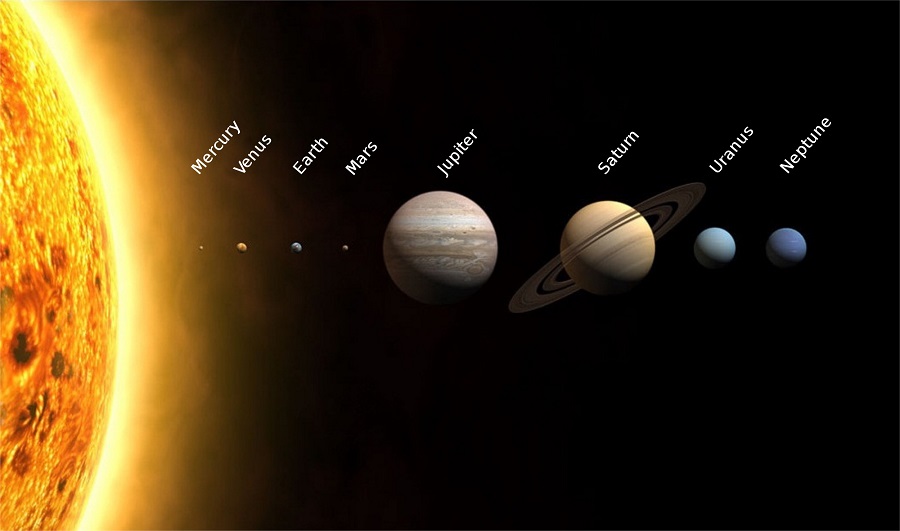Force and Pressure

If you push or pull an object, you exert a force on it and if it is not held tightly, it will move. All forces act to cause a change in motion. But force is not necessary to keep an object in motion. Once an arrow is released from a bow, it keeps moving without more force acting on it. Force is required to keep a motor car or an aircraft moving at a constant speed.
Contents
Force
A force is a push or pull exerted on an object that may give energy to the object and cause it to start moving, stop moving or change its motion.
If you want to open a door, you exert a force on it to cause it to move. Increasing your force will make it move faster. If you want to keep the door from opening, you also exert a force on it. This time the force prevents the door from moving. And if you want to change the direction in which the door is moving, you exert a force on it.
Measuring Force
You are pushing against the door and your friend is on the other side also pushing against the door which way do you think the tour will move in order to answer this question you must know the size of the forces the door will move in the direction of the greater force but if the forces are equal the dude will not move at all.
Force is need to measure in the numbers and units. Metric unit of force is Newton remember that a force of the motion of an object is one newton force in terms of our push or pull changes the speed of an object of a given mass a force of 1 Newton changes the speed of a 1 kilogram mass by 1 metre per second show the force in newton is equal to the mass of an object time its change in speed.
Types of Forces
There are many types of force some of them are as follows:
1. Muscular Force
When we lift weight by our hand, the force is exerted by the muscles of our arm. The force exerted by the muscles is called muscular force. Humans and animals usually exert muscular force to do work.
2. Magnetic Force
The force exerted by a magnet is called magnetic force. Iron, cobalt and nickel are magnetic substances. A magnet exerts a force of pull on magnetic substances. If we bring a magnet near small iron objects like pins, the magnet pulls them towards it. Like poles of two magnets repel each other. Unlike poles of two magnets attract each other. Some toys work due to magnetic force.
3. Electrostatic Force
The force exerted by an electrostatic charge is called electrostatic force.
4. Gravitational Force
In the universe each particle of matter attracts every other particle. The force of attraction exerted by bodies possessing mass is called gravitational force.
For example, a piece of stone attracts all other objects including the earth. The piece of stone in turn also experiences the gravitational force of all other objects. It is the gravitational force which keeps the moon revolving around the earth. The planets experience gravitational force of the Sun which keeps them in the orbit.
There is difference between gravitational force and force of gravity. Gravitational force is universal but the force of gravity is the force by which Earth attracts a body towards its centre.
5. Frictional Force
Objects do not come to rest on their own. What brings an object to rest is an invisible force called friction. Friction is a force that opposes the motion of an object. When objects are in contact with each other, friction acts in a direction opposite to the motion of the moving object. The moving object slows down and finally stops.
There are two types of friction: sliding and rolling.
When solid objects slide over each other, sliding friction acts between their surfaces. Sliding a book across a table produces this type of friction.
Whereas an object such as a ball or a wheel rolls over a surface rather than slides. The friction produced here is called rolling friction. Rolling friction tends to be less than sliding friction. That is why wheels are often placed under objects that are to be moved.
Pressure
Pressure is the “push” that is exerted on a certain area. Or, the force acting per unit area of the surface is called pressure. You can find pressure by dividing the force by the area.
Hence, pressure=force/area
The pressure exerted on a surface depends on the force exerted and the area of the surface. For same force, if area is small, then pressure will be large.
The unit of pressure is pascal.
Pressure in Fluids
As you dive under the water, you can feel the force of the water, especially against your ears. This force is “pressure”. All liquids and gases possess this force. Together, liquid and gases are called fluids. Fluid pressure is exerted in all directions down, up to the sides. But this pressure is directly proportional to the depth of the fluid.
Measuring Liquid Pressure
An instrument called manometer is used for measuring the pressure of fluids. It consists of a U tube filled with a liquid, the level of the liquid being determined by the fluid pressure and the height of the liquid being indicated on a scale.
Buoyancy
The fluid pressure pushing up can push objects up. The force that pushes an object up is called buoyancy. The upward buoyant force of a fluid opposes the downward force of gravity on an object. In other words, buoyancy acts against the weight of an object.
Atmospheric Pressure
Atmospheric pressure or air pressure is a measure of the force created by the weight of air pressing down on each square centimetre of the Earth’s surface. Air pressure is measured by a special instrument. This instrument is a barometer. It was invented by an Italian scientist Evangelista Torricelli in 1643.
Pressure By Air Is Exerted Equally In All Directions
Like the pressure at any depth inside a liquid, pressure by air is exerted equally in all directions. For example, we do not see an empty oil can being deformed by the enormous pressure of the atmosphere. This is so, because the air inside, tends to push the can outward while the air outside, pushes it in.
Measuring Atmospheric Pressure
The liquid pressure meter was made by tying a membrane on the width mouth of a funnel. This device is not sensitive enough to measure atmospheric pressure. As already mentioned, the device to measure atmospheric pressure is called barometer.
There are two types of barometer: (i) Mercury Barometer and (ii)Aneroid barometer.
Mercury Barometer:
A 100 cm long narrow stout glass tube closed at one end is taken. It is filled with mercury to the brim. It is sealed with finger. This tube is inverted with the sealed end of the tube into a trough containing mercury. The tube is held in vertical position and the finger is removed. Some Mercury flows out of the tube into the trough, leaving vacuum at the top of the tube. An appreciable amount of Mercury remains standing in it. The pressure of this column of mercury in the inverter tube is balance by the atmospheric pressure.
Aneroid Barometer:
The mercury barometer being heavy and breakable is not portable in a ship or an aeroplane.
The aneroid barometer consists of a metal box. Partial vacuum is created in it. Its lid is flexible and joined with a spring and a system of levers.






Responses